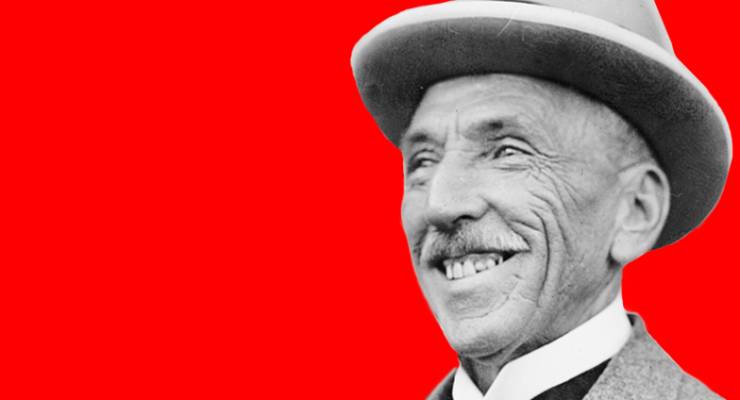
Crikey continues its merry investigation into the history of political two-timers — check out part one here. Today it goes all the way to the top.
Joe Lyons
Joe Lyons was postmaster-general in James Scullin’s Labor government when the depression hit in 1930 and would soon be made acting treasurer, after the resignation of Ted Theodore. Formulating an appropriate response to this disaster would end up splitting the party. Lyons’ conservative approach — he favoured cutting public spending and salaries, providing more credit for business — put him at odds with Scullin, who favoured Theodore. Theodore was promptly reappointed to the treasury.
Lyons resigned from the cabinet and then the Labor Party. He poached four right wing Labor MPs and joined pioneering ship-jumper Billy Hughes (see below) to start the United Australia Party. At the next election in 1931, a massive swing to UAP candidates saw them voted into power, and Lyons became prime minister.
“In the case of Lyons, it probably wasn’t predominantly opportunism, there were significant issues of policy at stake in those moments,” Frank Bongiorno, Professor of History at Australian National University, told Crikey. “He quit over whether Australia should go down an inflationary or deflationary path in response to the Depression.”
Lyons may have ditched his party on sincere policy grounds, not pure self-interest (which can’t be said of everyone we’ve cataloged) but in retrospect, Bongiorno doesn’t see his conservative economic policies as all that surprising.
“Lyons was very much in the thrall of Melbourne business interests; they basically installed him,” he said. “So while his move definitely had a policy and ideological element, he couldn’t have been under any illusions that he was doing the bidding of wealthy businessmen.”
Billy Hughes
“He came in with federation and went out in a coffin,” associate professor of history at Curtin University Bobbie Oliver says of perhaps Australia’s most famous (and certainly most prolific) political turncoat, William Morris Hughes. Part of the first batch of MPs in 1901, he served as prime minister of Australia from 1915 until 1923.
Hughes defected from the ALP in 1916 over the issue of conscription in World War I. Having himself been consistently pro-conscription (as well as advocating compulsory universal military training), he put the idea to the Australian people in 1916, who narrowly rejected it. The issue led to a monumental split in the Labor Party — which, Oliver said, had been split on whether to support an imperialist war in the first place — and Hughes was expelled in September of that year.
Taking a group of 23 disaffected Labor MPs with him, Hughes formed a new party called National Labor, before forming a coalition with the Liberals (ye olde Nationals). That was then formalised into the Nationalist Party in time for the 1917 election, which it won.
“I think ultimately, he wasn’t really a Labor man at heart,” Oliver said. “He may have thought he was initially, and he did come up through the union movement, but he ended up spending a lot more time in other parties.”
Hughes resigned as prime minister in 1923, as part of a deal that would keep the Nationalists in power in a coalition with the Country Party, but he would remain in office until his death in 1952 at the age of 90. During his time in parliament (the longest period served by any Australian) he would be a member of six parties and coalitions (Labor, National Labor, Nationalist, Australian, United Australia, and Liberal) as well as a couple of brief stints as an independent.
“He was a fascinating character,” Oliver said. “Wizened and wiry, endlessly energetic and vitriolic with this high, raspy voice. He was also very funny; when it was pointed out the only party he never joined was the Country Party, he replied ‘I had to draw the line somewhere’.”








In the middle of the section about Lyons, he becomes Lyon?